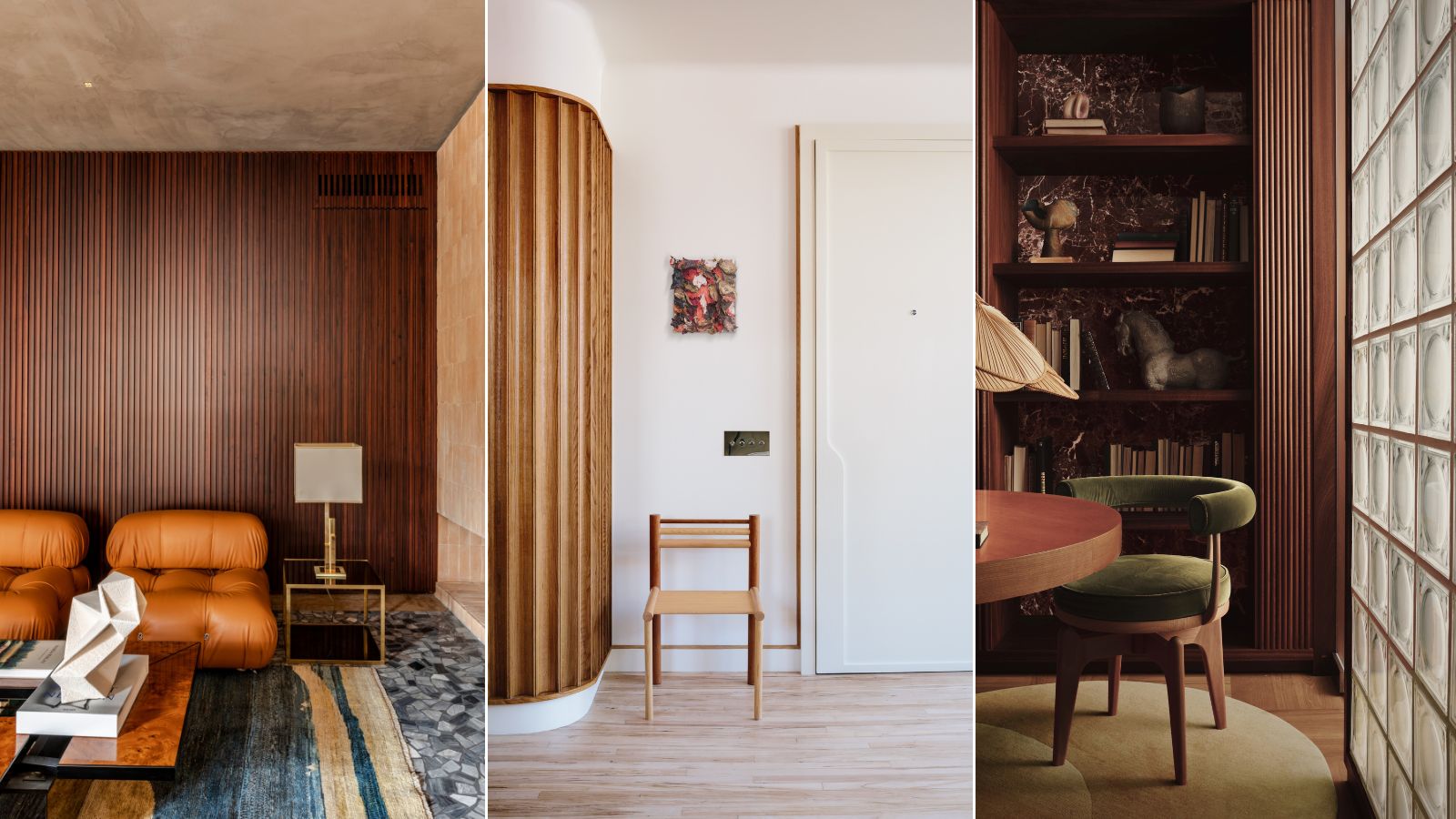
Tambour paneling has been making a slow and steady rise in recent months, and we are starting to see more of it than its more traditional counterparts. Sleek, tactile, and contemporary, this slatted approach to paneling is a simple way to instantly elevate and add texture to the blandest of spaces – and so many designers are turning to this trend.
It's also a look that has the potential to DIY, and social media is filled with beautiful examples of how a room has totally been transformed with slats of wood and little else. But where are the best places to use this paneling trend? And what styles do they suit best? We asked designers who love the look for all their advice, plus pulled together some of our favorite spaces that really highlight how beautiful and versatile this interior design trend can be.
What is Tambour Paneling?
Tambour paneling is a wall treatment made from wooden slats (we say slats because that's the easiest way to describe them, but they can be rounded or curved) that are carefully connected to create a continuous, flexible surface.
Unlike traditional flat wall paneling, tambour offers a distinctive three-dimensional look, thanks to its fluted woodcuts that allow each slat to move independently.
It typically comes in two varieties: bead tambour, with its rounded, classic fluted design, and slat tambour, which features flat-faced planks.
In contrast to rigid paneling options like shiplap paneling, which relies on static tongue-and-groove connections, tambour offers a more flexible approach that adapts beautifully to a variety of architectural styles and can even work its way around a curve.
1. Apply to curved walls for a striking design feature.
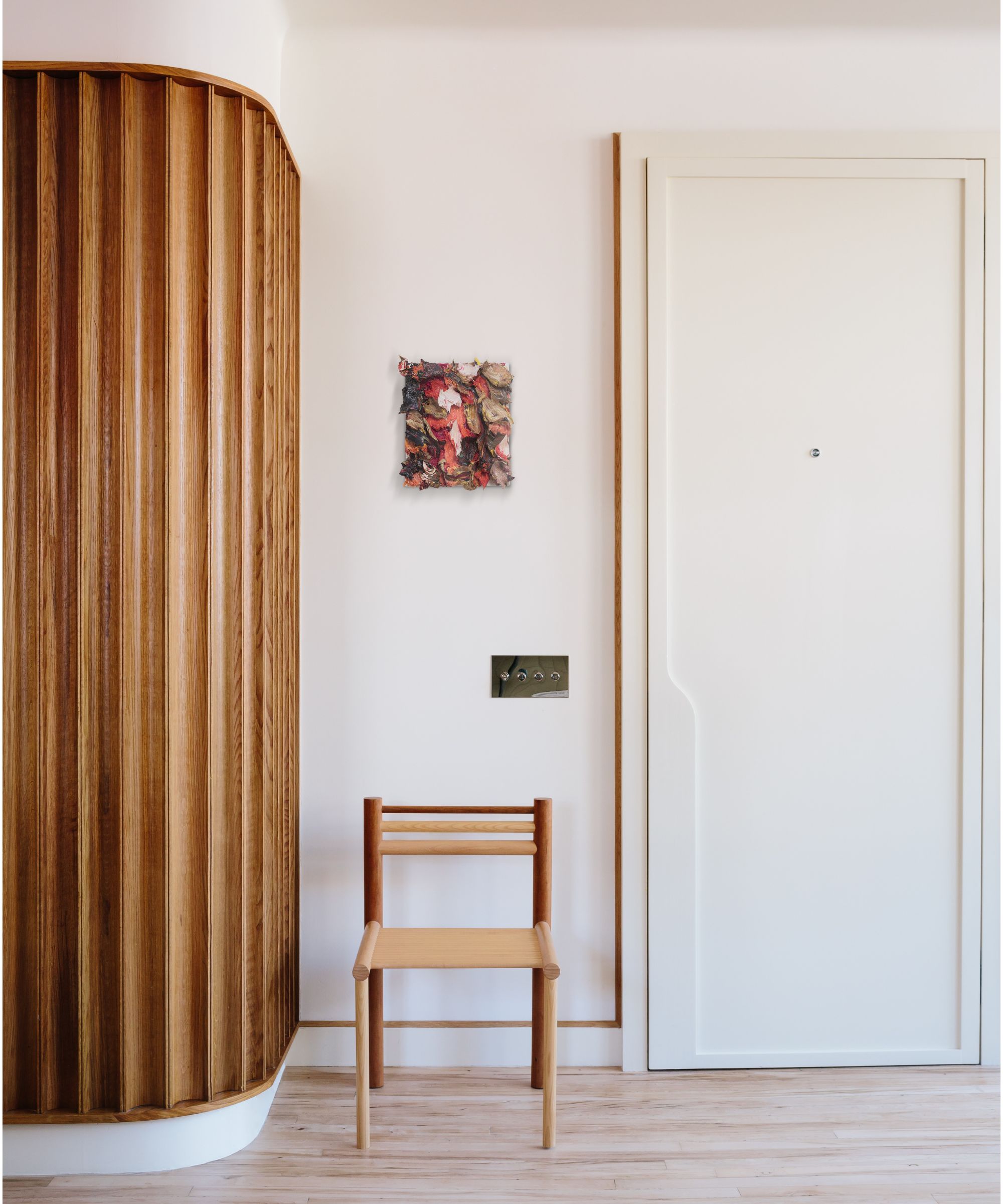
If you want to make a statement in a room blessed with curves or architectural pillars, tambour paneling is the perfect choice. Its flexible design, which is arguably its most captivating feature, makes it an incredibly achievable and striking way to transform those tricky, curved spaces that are often difficult to customize.
When paint just doesn’t provide the texture or dimension you’re after, tambour is the ideal solution. Pernille Lyk from Københavns Møbelsnedkeri explains, ‘The practical aspect of easily concealing a workspace, combined with the aesthetic appeal of unbroken slat sequences and the playful motion of cabinets that bend around corners, makes tambour an exciting material to work with.’
Designed to flex and conform to rounded walls, cabinetry, and columns, tambour creates smooth, uninterrupted swathes of texture and delivers a polished, professional finish that is surprisingly easy to achieve at home without the need for a master craftsman (or the cost that comes with one!)
2. Opt for darker woods to achieve a refined retro inspired look
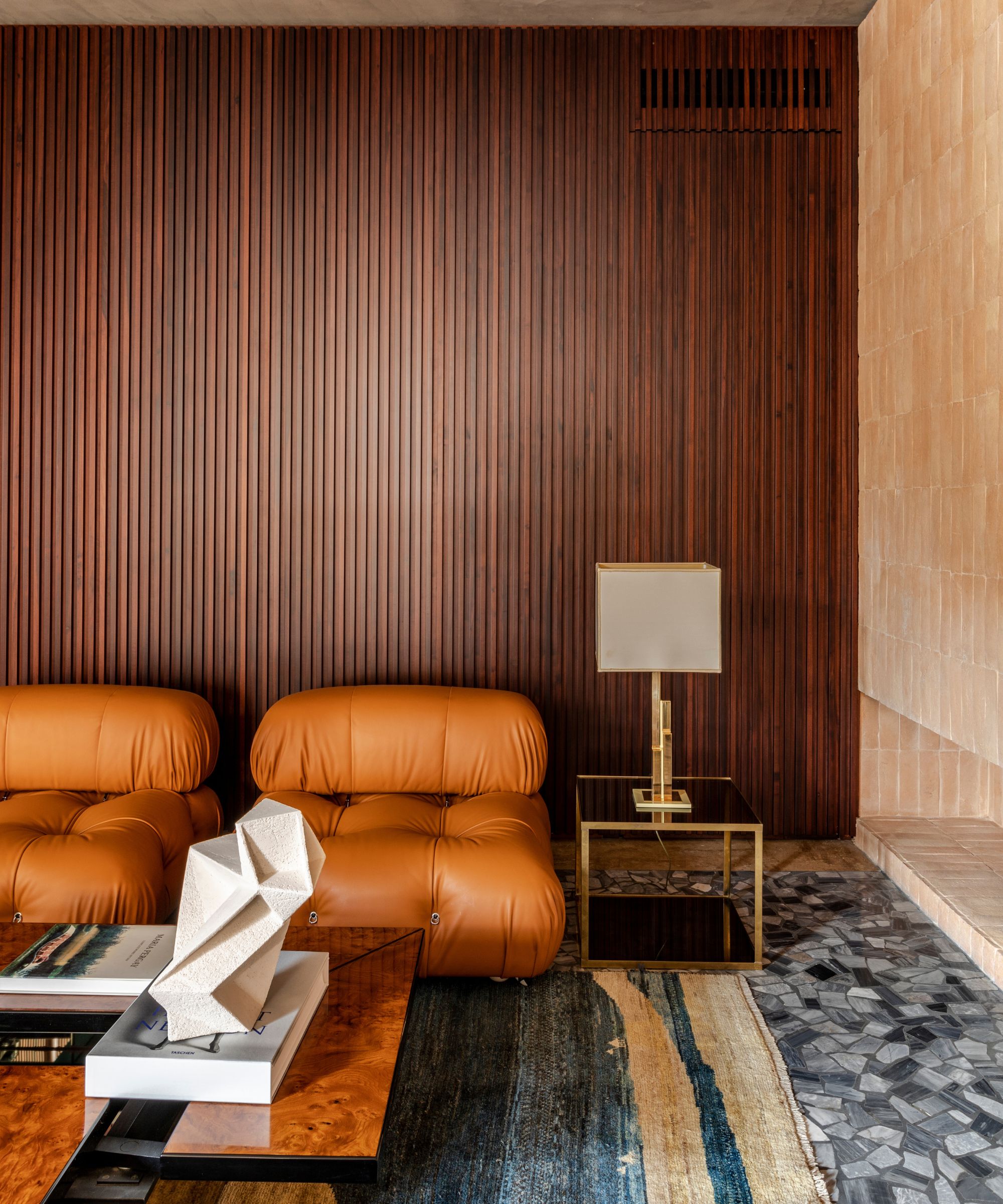
A feature wall is an ideal way to breathe life into a room. When used from floor to ceiling, it becomes a true showstopper, drawing attention and creating a focal point that offsets furniture in a way that paint simply can’t.
Not only does it add texture, depth, and warmth to a room, but it's also remarkably easy to install. The trickiest part is ensuring you’ve measured the number of panels you need, and after that, it's a straightforward process of gluing and nailing the panels into place. With minimal effort and a little planning, you can achieve a major design impact with this DIY-friendly project.
One of the most appealing attributes of tambour paneling lies in its endless customization options, including a wide range of color choices. For those looking to inject a touch of 1970s chic into their space, these walnut wood fluted panels from Wood Veneer Hub are the perfect starting point. Walnut’s rich timeless shade beautifully complements the darker, moodier textures that define 20th-century retro-style interiors.
3. Use in bathrooms as an alternative to traditional finishes
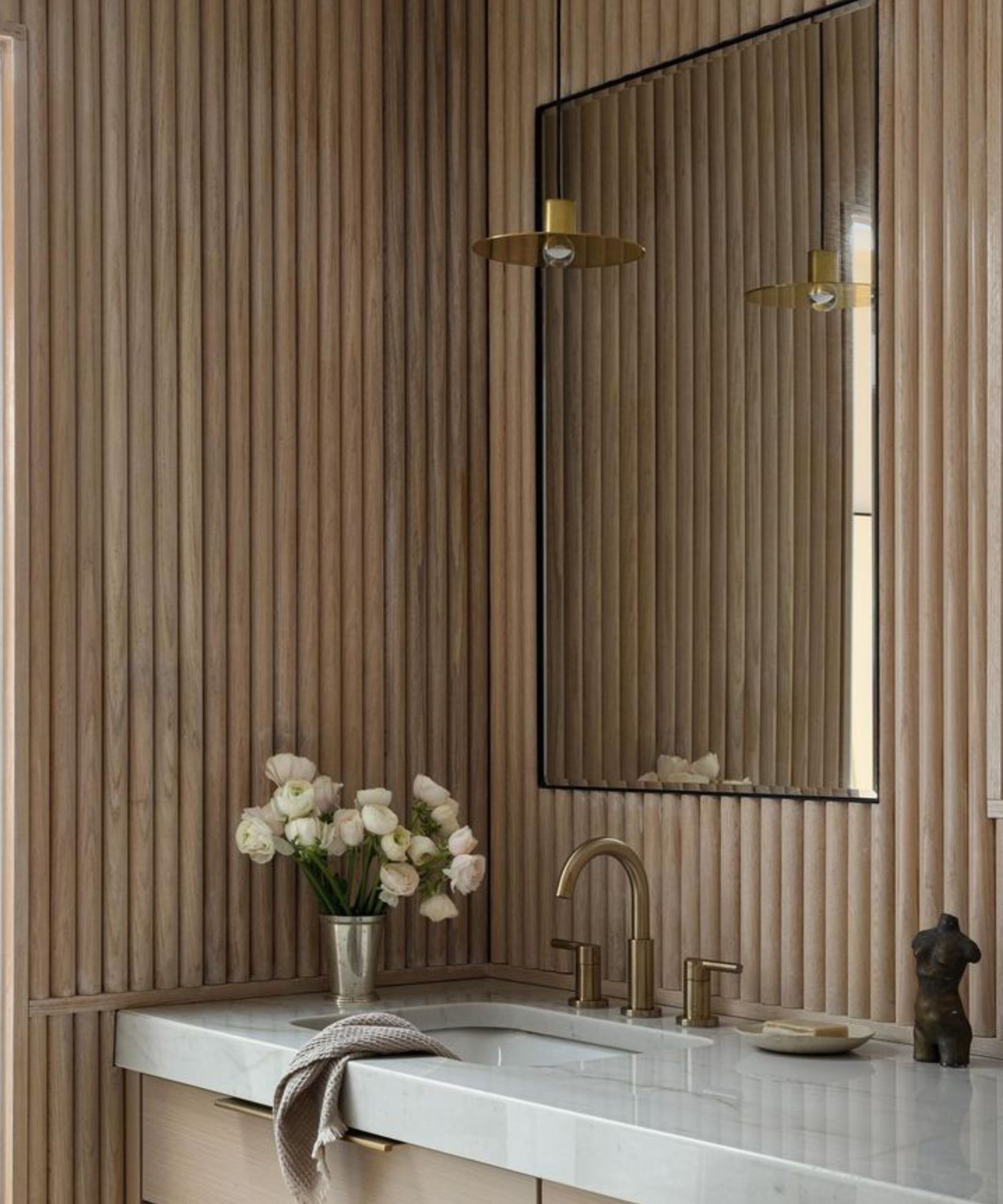
Fluted tiles can be found in plentiful supply and many pieces of built-in and standalone bathroom furniture feature tambour details.
However, tambour works beautifully as a wall feature independently, and it offers a refreshing alternative to the typical tile and paint options often found in a bathroom scheme. Used in the right way and in the right amounts, it gives off a serene, spa-like atmosphere, reminiscent of a sauna.
As Interior Designer, Pascale De Fouchier reflected on the space she designed, ‘Here, the goal was to create a spa-like ambiance, but also to make the room feel more spacious with higher ceilings, which was achieved thanks to the vertical lines. It brings texture and warmth in a flowing yet seamless way, creating a sense of calm and continuity. The lighter choice of wood complements the existing cabinetry and gently contrasts with the soft-toned countertops and floors.'
4. Create a headboard feature
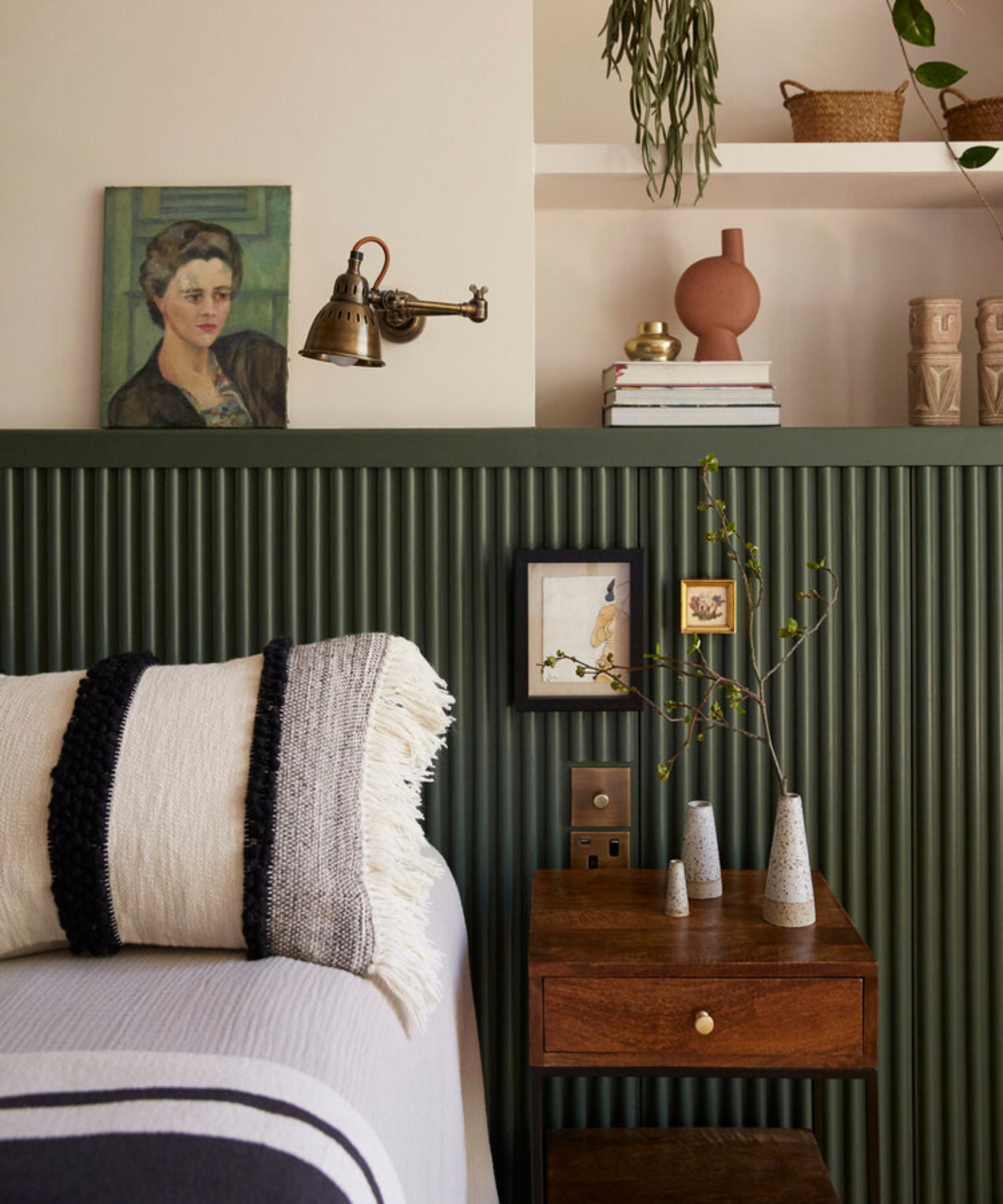
There's an emerging trend of tambour paneling being used as a headboard. Its appeal in the bedroom is its relatively simple ability to create a big statement. You could use tambour paneling to create a framed headboard or to cover an entire wall for a more immersive feel.
The style's versatility allows it to be customized to fit your bedroom design scheme, with an expansive range of options for size, finish, making it a rather popular choice for the DIY inclined.
Whilst installing these panels horizontally is the most popular configuration, the possibilities are endless with this material and a vertical headboard could be just as impactful if you needed to create height in a room.
As interior designer Monica Tostes explains, ‘One aspect of tambour paneling that I find particularly appealing is its soft, warm appearance and the ease with which it can be adapted to different design schemes and wall shapes. Furthermore, depending on whether it is installed vertically or horizontally, tambour paneling can help create visual illusions that alter the perceived length or height of the room.'
5. Enhance the look of built-in cabinets
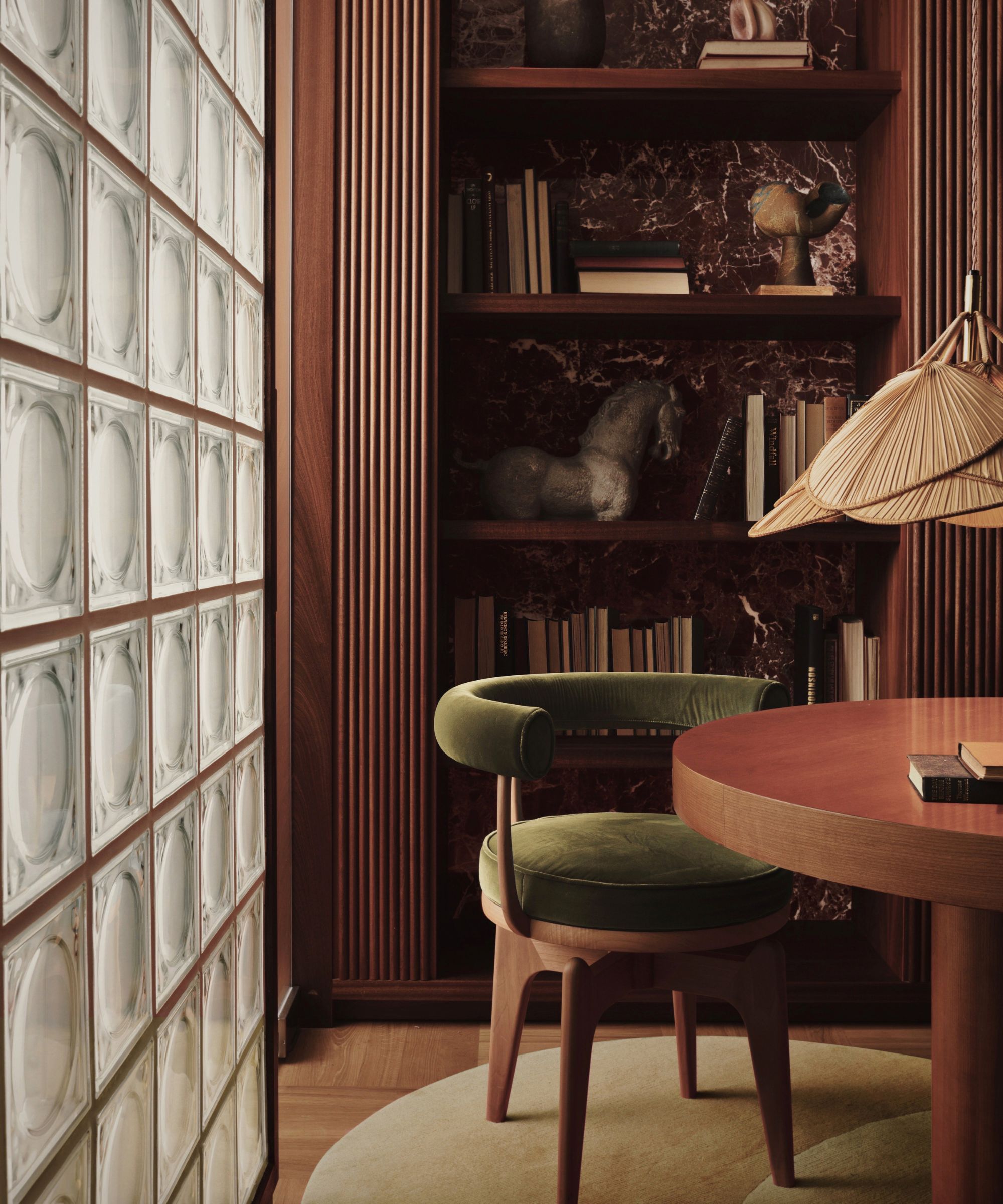
If a feature wall is too overwhelming for your space but you still want to explore the tambour trend, using it to add a little interest to furniture is an excellent way to introduce it in smaller doses.
Tambour has long been a staple in furniture design, all the way back to the 1700s in fact, and you can see it in many historical designs as well in modern pieces with Mid-century designs being highly sought after. But incorporating tambour into your own pieces can be a lovely way to bring the style into your home if a more bespoke solution is what you’re after.
It’s also incredibly effective when used on built-in cabinetry, really elevating what could be a purely functional feature into a stunning design element. As Oliver Haslegrave from Child Studios notes, ‘When used in cabinetry, for example, it offers a refined, understated detail that makes storage more playful and engaging. In this project, our custom tambour paneling was used to create a sense of flow and continuity, highlighting the relationship between traditional craftsmanship and modern form.’
Tambour paneling is the perfect way to elevate any blank wall or make a built in more interesting and textured. While this take on paneling is often seen in more modern spaces, it's really versatile and can work in many spaces and with many styles from uber-modern to Mid-century to classically traditional rooms.







